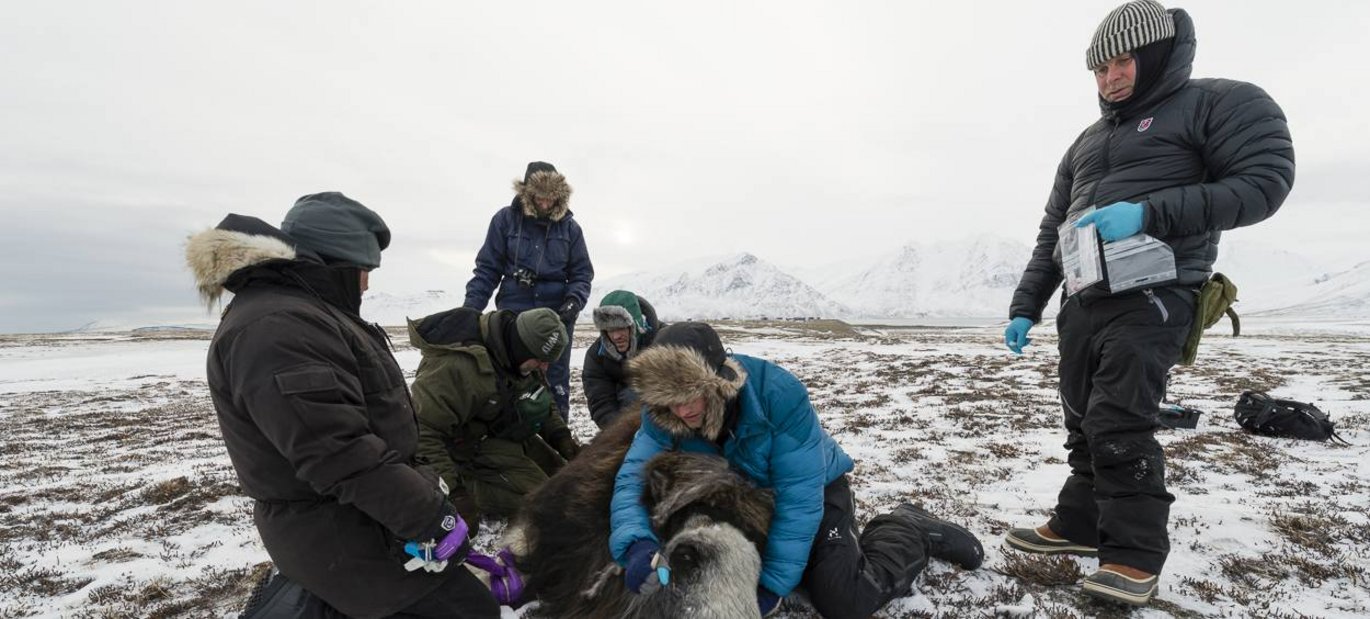Scientist of the month - September
The SOTM in September is one of the most experienced GEM scientists in the program, who has been involved in GEM almost since the beginning. Niels Martin Schmidt has now worked for GEM in more than 20 years, and has steadily changed his focus from research on small, collared lemmings to large musk oxen.

The fascination of life in vast, cold and remote regions started as a kid, when Niels and his family went hiking in Norway. Later in his biology studies, Niels went to Greenland as an undergraduate, which convinced him to specialize in Arctic ecology. Hence, after reading in the newspaper about the establishment of Zackenberg research station in 1997, he contacted Dr. Hans Meltofte, one of the founders of Zackenberg, and asked if he could become an assistant to the BioBasis program. Luckily he could, and the rest is history – since 1998, Zackenberg has been visited almost all summers. The research targets Arctic terrestrial ecology with particular emphasis on understanding the interactions between trophic levels, but also species/community responses to climate change.
Since 2006 Niels has worked as a manager of BioBasis Zackenberg and since 2016 also as manager of BioBasis Nuuk. He is thus responsible for the collection of a huge amount of biodiversity data from almost all compartments of the Arctic ecosystem, and his research has contributed to resolving how climate affects arctic organisms and their interactions. In recent years, the research has been particularly focused on muskoxen (the only large-bodied herbivore in the national park in NE Greenland), their population ecology, and on how climate-induced changes in their food base affect their demographics.
After many years of watching muskoxen from the distance, counting them, examining the diets and their impacts on the vegetation, one of Niels’ most memorable experiences so far, was to finally get really close and to mount advanced tracking equipment of these pre-historic creatures.
“Go to the Arctic – once you’ve been there you either won’t ever go there again or you will forever be wanting to go back”
The Arctic is home to a diverse and unique set of organisms, particularly adapted to life under extreme conditions. Though still rather complex, the Arctic is more simple than low-latitude ecosystems and thus offers a fantastic platform to understand the interactions between individuals and between species, and to understand the “rules” that structure communities. According to Niels, we can extract so much global knowledge from deciphering the Arctic ecosystems.
In his view, working within an inter-disciplinary program such as GEM and visiting remote arctic locations gives you a unique opportunity to gain in-depth insight into the multi-facetted arctic ecosystems. “Being an ecosystem-based monitoring program, GEM offers the full suite of data for the ecosystem, which is quite unique, not least for the Arctic. GEM provides the long-term perspective and basis for short-term research projects, and cross-fertilization between the two aids improving both our understanding and our monitoring of the arctic ecosystems”, he says.
Due to his insight into arctic biodiversity and knowledge of long term monitoring, Niels is also deeply involved in the Arctic Council workgroup on biodiversity CAFF (Conservation of Flora and Fauna). This includes developing protocols for monitoring of arctic biodiversity, and help making sure that field data are funneled into large-scale, international syntheses and assessments